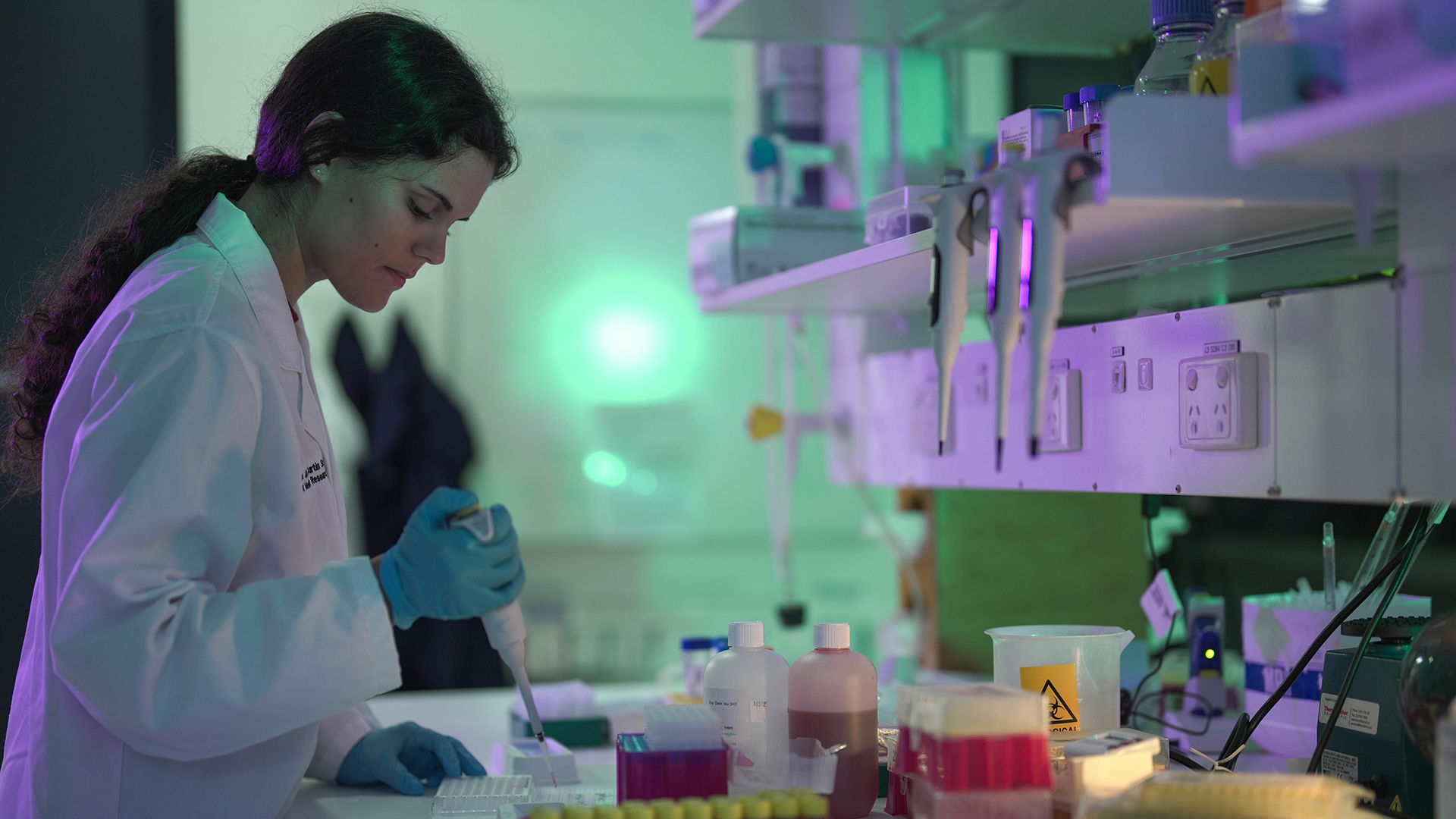Young researchers take on a hidden link in gut disease
By Calo Huang
Inside every one of us runs a long, vital tube.
From mouth to anus, the gastrointestinal (GI) tract breaks down food and clears waste—securing our energy, growth, and health.
But for around 180,000 Australians, this crucial system is constantly under attack, from within.
Their own immune systems turn on them, triggering chronic inflammation of the GI tract, causing abdominal pain, chronic diarrhea, and rectal bleeding.
This lifelong and often stigmatising condition, known as inflammatory bowel disease (IBD), is costing an estimated $7.8 billion in Australian healthcare every year while impacting many people’s quality of life.
What sparks the immune attack that inflames the GI tract, however, remains unanswered.
A group of early to mid-career researchers is determined to find out.

“Our research is aimed at revealing specific molecular events of the immune system that maintain intestinal health and prevent disease,” says Dr Abhimanu Pandey from the John Curtin School of Medical Research (JCSMR) at The Australian National University (ANU).
At the centre of their investigation is a single, newly annotated immune protein—one that has been hiding in plain sight for a long time.
“Little is known about the protein, except that when it’s missing or mutated, people experience severe congenital diarrhoea and intestinal failure,” explains Dr Gavin Sutton, computational biologist from the University of Sydney.
Notably, a substantial number of people with congenital diarrhoea go on to develop IBD.
So what’s the connection? What role does this immune protein play in preventing intestinal inflammation, and why has it been overlooked until now?
“The key objective of our project is to investigate how genetic mutations in the immune system cause the development of congenital diarrhoea and IBD,” says Dr Cynthia Turnbull from JCSMR.
To do so, the researchers generated a genetically modified mouse model that lacks the immune protein of interest.
What they found was striking: the absence of that single protein resulted in defective colons and elevated inflammatory cytokines—molecular signals that drive intestinal inflammation. The mice showed similar traits to those observed in human patients.
The discovery drove them to investigate the protein’s role further.
“It’s critical to figure out its expression pattern,” says Dr Sutton, “We also need to understand the exact tissues and cell types within the tissue which produce the protein.”
To do this, the team is using cutting-edge techniques like spatial transcriptomics and proteomics, which allow them to map gene expression and protein profiles within precise regions of tissue.
They will be among the first to characterise the protein’s function, through both mouse models and biopsy samples from people with IBD.
“We hope our work will pave the way for a new biomarker and target for novel immunotherapies for gastrointestinal diseases,” says Dr Turnbull.
“Intestinal inflammation conditions like IBD are significant health concerns in Australia,” adds Dr Pandey, “If we can find a way to modulate this protein’s activity, we may be able to trigger anti-inflammatory responses and push beyond the efficacy limits of current treatments.”
The project is funded by the Medical Research Future Fund (MRFF) through its competitive Early to Mid-Career Researcher Grant scheme.

For these three young scientists, it’s not only about a potentially impactful discovery but also a vital step toward long-term research independence.
“Young researchers are facing ever increasing difficulties in securing funding for their own research,” says Professor Si Ming Man, group leader at JCSMR and Associate Investigator of the project, “I am absolutely delighted that Abhimanu, Cynthia, and Gavin are being given this major funding boost to turn their high-risk ideas into groundbreaking discoveries that will benefit human health.”
“They are the brightest and highest-performing biomedical researchers who will deliver new treatments for people with gut conditions associated with immune deficiencies. This is just the beginning.”



